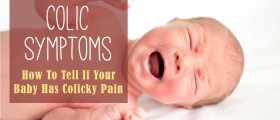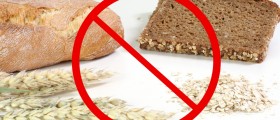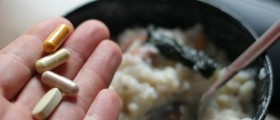
Lactose intolerance is a frequent and widespread temporary problem in babies. However, it is very disturbing both to parents and the baby. The baby’s body sometimes doesn’t produce enough lactase, the enzyme needed to digest lactose. Lactose is the primary sugar found in milk and other milk products. Signs and symptomsThe first signs of lactose intolerance begin about 30 to 120 minutes after consuming milk. Undigested lactose stays in the intestines and creates gastrointestinal problems. It manifests as stomach pain caused by the overproduction of gas in the intestines. Babies may have trouble sleeping and wake up suddenly and start crying. The most common symptoms include diarrhea, abdominal cramping, bloating, or gas.
Causes
Lactose intolerance sometimes occurs in babies born prematurely. They may be unable to produce sufficient amounts of lactase for some time. However, these levels often become normal during the end of the last trimester of pregnancy.
It is not quite certain what causes lactose intolerance but it might be connected to genetics. It is already known that around 90 percent of Asian Americans, 75 % of African Americans, Hispanic Americans, Jewish, and Native American adults suffer from lactose intolerance
In some rare cases, a baby can be born with lactose intolerance. Both parents would have to pass the appropriate gene for this to happen. These babies suffer from serious diarrhea so they need a special lactose free infant formula to substitute the mother’s milk.
Certain medications may also affect the body’s ability to produce lactase and thus cause temporary lactose intolerance and its symptoms. Patients who suffer from celiac disease or Crohn’s disease or other conditions that affect the intestines, may also suffer from lactose intolerance.Understanding lactose intolerance
Some lactose intolerant people can consume small amounts of milk products without unpleasant symptoms. Others, however, can’t stand even the small amounts of lactose.
It should not be confused with an allergy. An allergy is an immune response while lactose intolerance represents a digestive condition. If a baby shows symptoms common for allergies like hives, watery eyes, runny nose, it is more probable that it suffers from an allergy to one of the proteins in milk.
The real lactose intolerance usually shows up in grade school. It is not very likely to happen in babies. If parents suspect a baby is lactose intolerant they should consult a doctor.
TreatmentThere is no treatment or prevention method for lactose intolerance. However, there are some tips to follow. Parents, as well as the lactose intolerant people, should ban milky products from their baby’s diet and especially focus on reading labels to avoid food containing lactose. Labels should be checked for ingredients such as whey, curds, milk byproducts, dry milk solids, and nonfat dry milk powder. Since recently, products containing milk must be labeled.
It might be good to try with different quantities of milky products and watch for a baby’s reactions. This is the only way to determine how much of the milk products a baby can handle. Some cheeses and live culture yogurts have less lactose than the other milk products, and they might be easier to digest.
If milk has to be removed from a baby’s diet, it is important to substitute calcium from other sources. Leafy green vegetables, fortified juices, soy milk, tofu, broccoli, canned salmon, oranges and fortified breads are well known sources of calcium. Vitamins A and D, riboflavin and phosphorus should also be replaced from other sources.
Many lactose free products are nowadays available on the market. They have all the nourishing ingredients except the harmful lactose.

















Your thoughts on this
Loading...